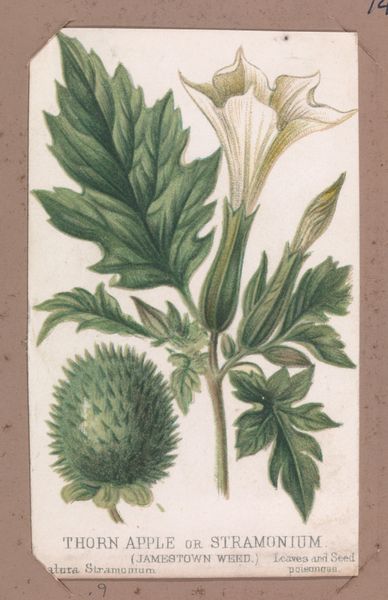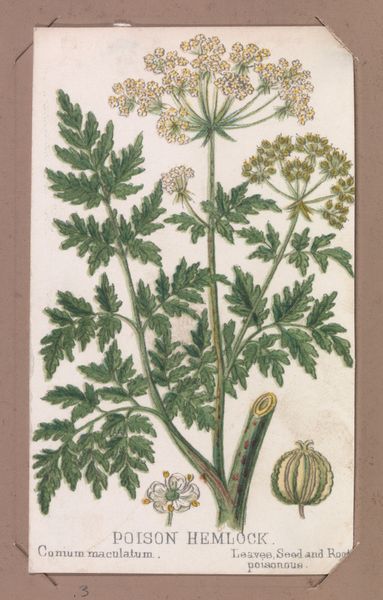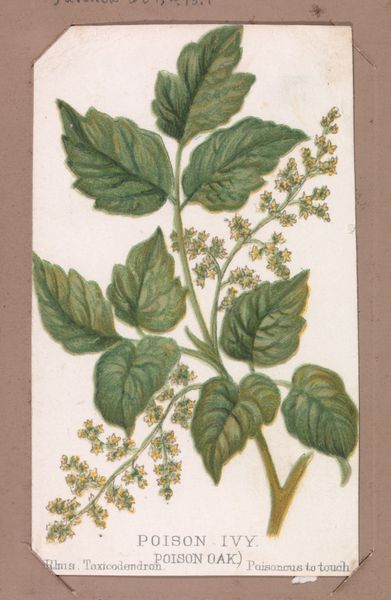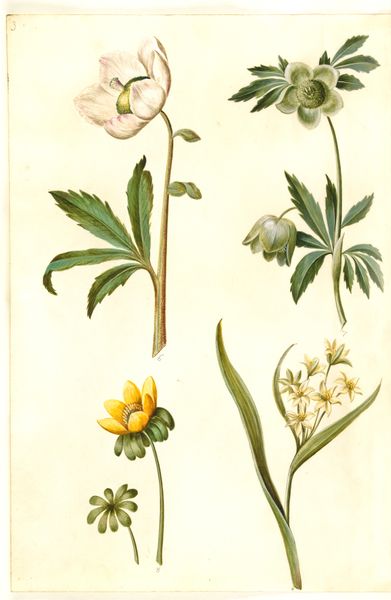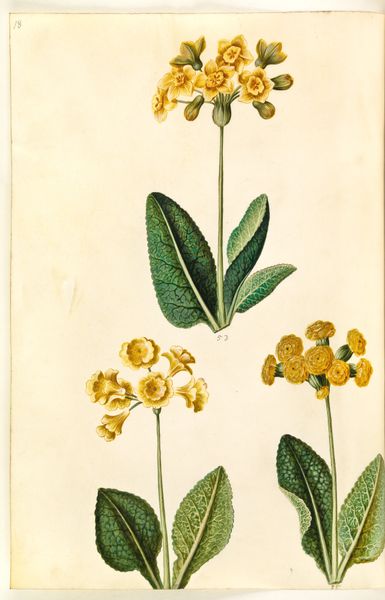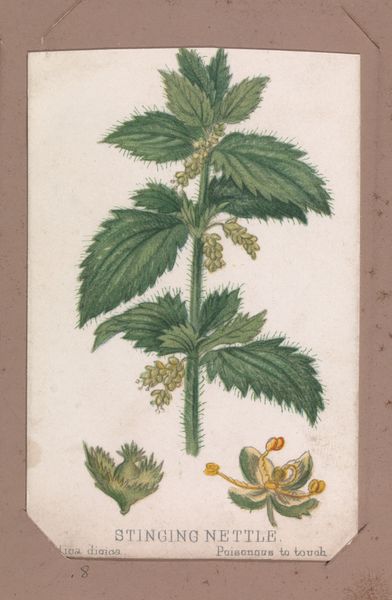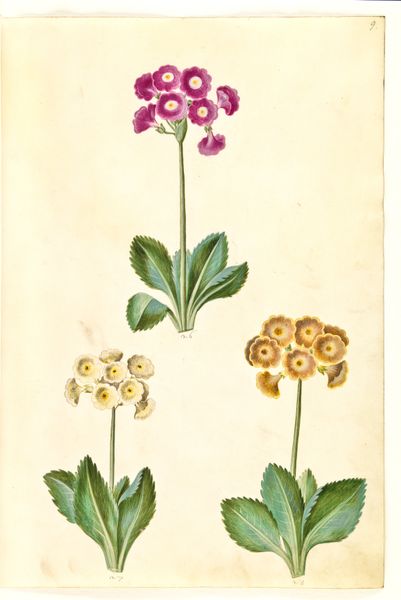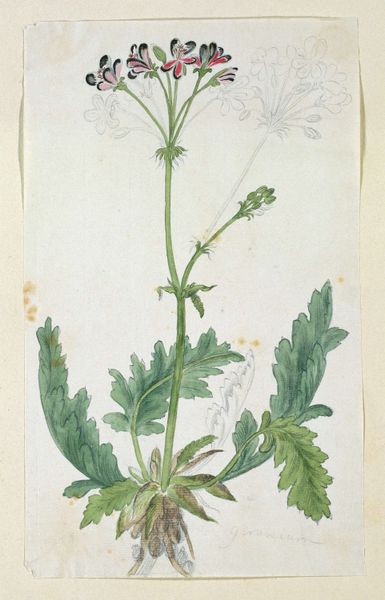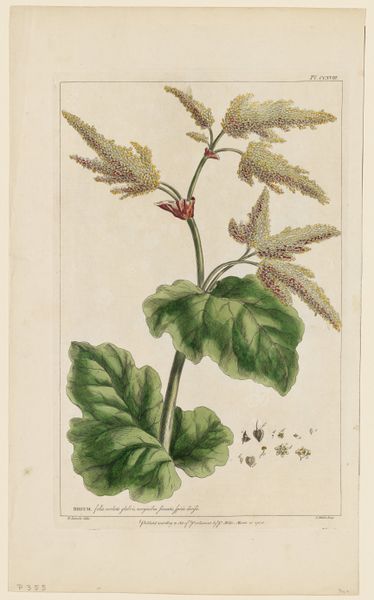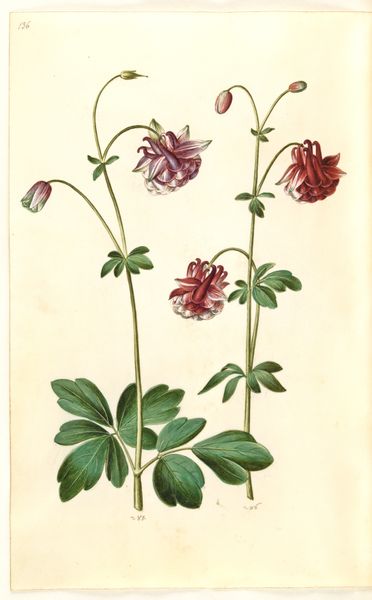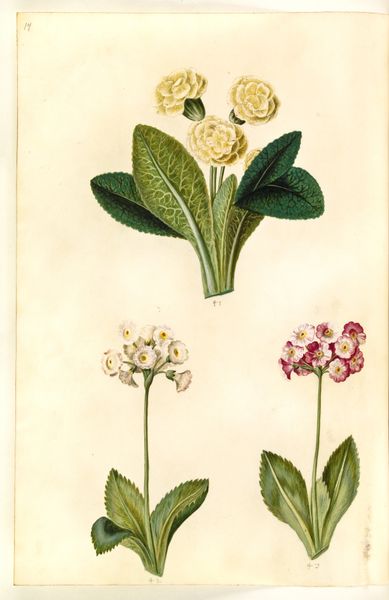
drawing, coloured-pencil, print, watercolor
#
drawing
#
coloured-pencil
#
water colours
# print
#
watercolor
#
coloured pencil
#
plant
#
botanical art
#
watercolor
Dimensions: Sheet: 3 7/8 × 2 3/16 in. (9.8 × 5.6 cm)
Copyright: Public Domain
Editor: Here we have "Wild Parsnip from the Plants series" by Louis Prang & Co., dating from around 1862 to 1869. It’s a beautiful watercolor and colored pencil drawing, so detailed and precise. What do you see in this botanical print? Curator: This work presents us with an opportunity to consider the intersection of science, art, and social power during the 19th century. Botanical illustrations, like this parsnip, weren’t just about accurately depicting plants. They played a role in shaping scientific knowledge and sometimes in justifying colonial expansion, by documenting plants and their potential use or threat. Does knowing this change your perception? Editor: It does a bit! I just saw it as a pretty, detailed plant picture, but thinking about it being part of shaping knowledge makes it feel different. Curator: Exactly! Think about who had access to this kind of knowledge and how it could be used. Was it used to advance medicine, agriculture, or something else? And how were these botanical prints disseminated to a wider audience? Editor: That makes me think about class, too. Was this information for everyone, or mainly for wealthy landowners or scientists? Curator: Precisely. Botanical illustration often reflected the interests of a privileged class. And while celebrating scientific progress, it can be used for marginalization, reinforcing the unequal access to resources or power. We need to ask difficult questions about representation and who benefits. Editor: This has given me so much to consider, it shows a picture is so much more than just the surface image! Curator: Indeed. Analyzing the social and political implications of even a seemingly innocent image of a plant unlocks a richer understanding of history.
Comments
No comments
Be the first to comment and join the conversation on the ultimate creative platform.
